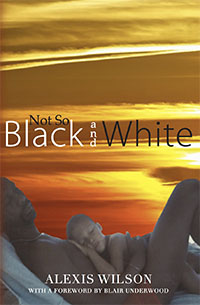Little White LiePosted in Autobiography, Identity Development/Psychology, Judaism, Media Archive, Religion, United States on 2014-07-23 23:41Z by Steven |
OTB Productions LLC
2013
66 minutes
Lacey Schwartz, Producer/Director
Mehret Mandefro, Producer
James Adolphus, Co-Director
What defines our identity, our family of origin or the family that raises us? How do we come to terms with the sins and mistakes of our parents? Lacey discovers that answering those questions means understanding her parents’ own stories as well as her own. She pieces together her family history and the story of her dual identity using home videos, archival footage, interviews, and episodes from her own life. Little White Lie is a personal documentary about the legacy of family secrets, denial, and redemption.
Little White Lie tells Lacey Schwartz’s story of growing up in a typical upper-middle-class Jewish household in Woodstock, NY, with loving parents and a strong sense of her Jewish identity — despite the open questions from those around her about how a white girl could have such dark skin. She believes her family’s explanation that her looks were inherited from her dark-skinned Sicilian grandfather. But when her parents abruptly split, her gut starts to tell her something different.
At age of 18, she finally confronts her mother and learns the truth: her biological father was not the man who raised her, but a black man named Rodney with whom her mother had had an affair. Afraid of losing her relationship with her parents, Lacey doesn’t openly acknowledge her newly discovered black identity with her white family. When her biological father dies shortly before Lacey’s 30th birthday, the family secret can stay hidden no longer. Following the funeral, Lacey begins a quest to reconcile the hidden pieces of her life and heal her relationship with the only father she ever knew.
Little White Lie, formerly called Outside the Box, is a feature documentary produced by Truth Aid in association with ITVS. The film will enter the festival circuit in 2014 and be broadcast on Independent Lens on PBS in 2015.

